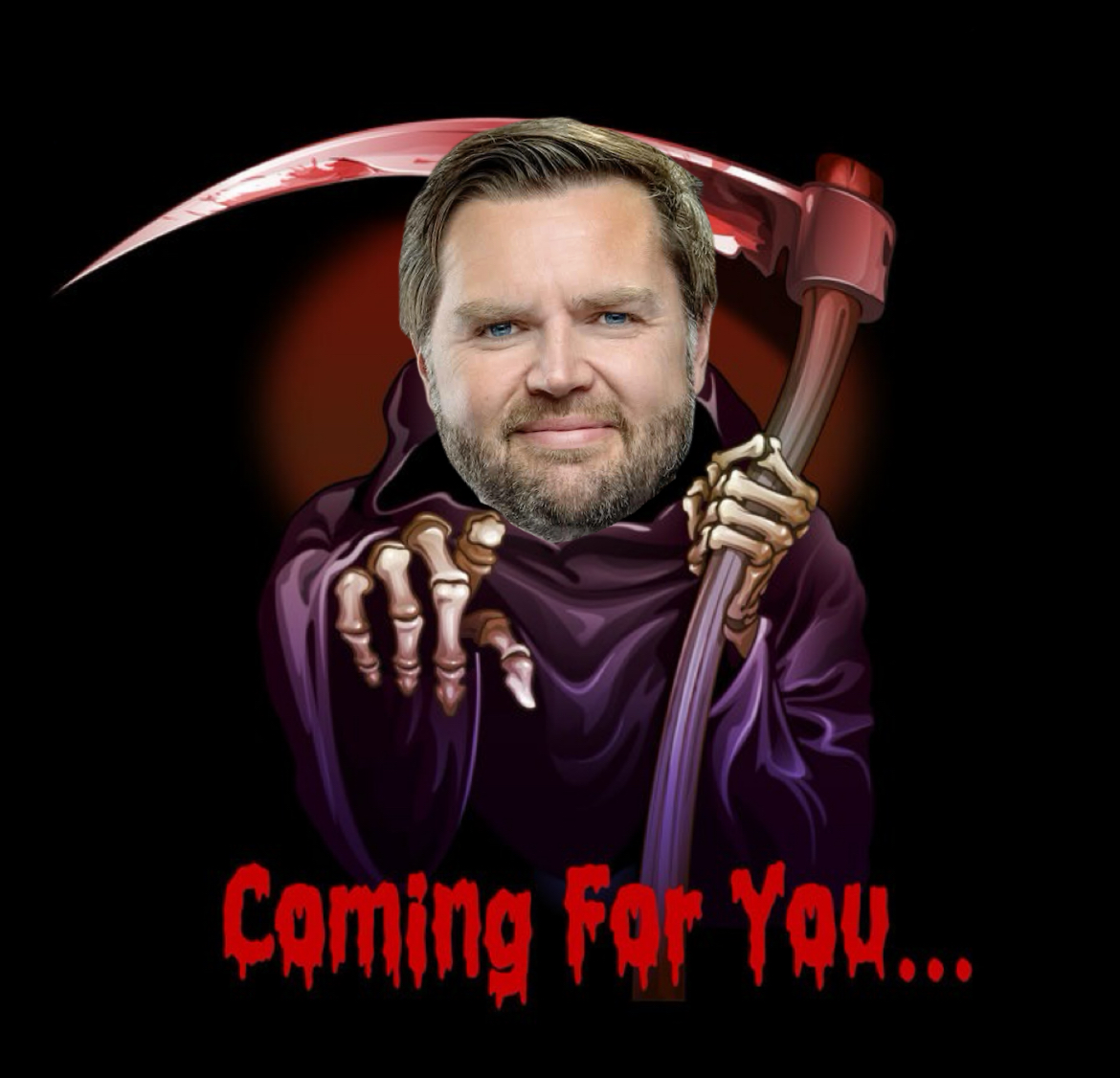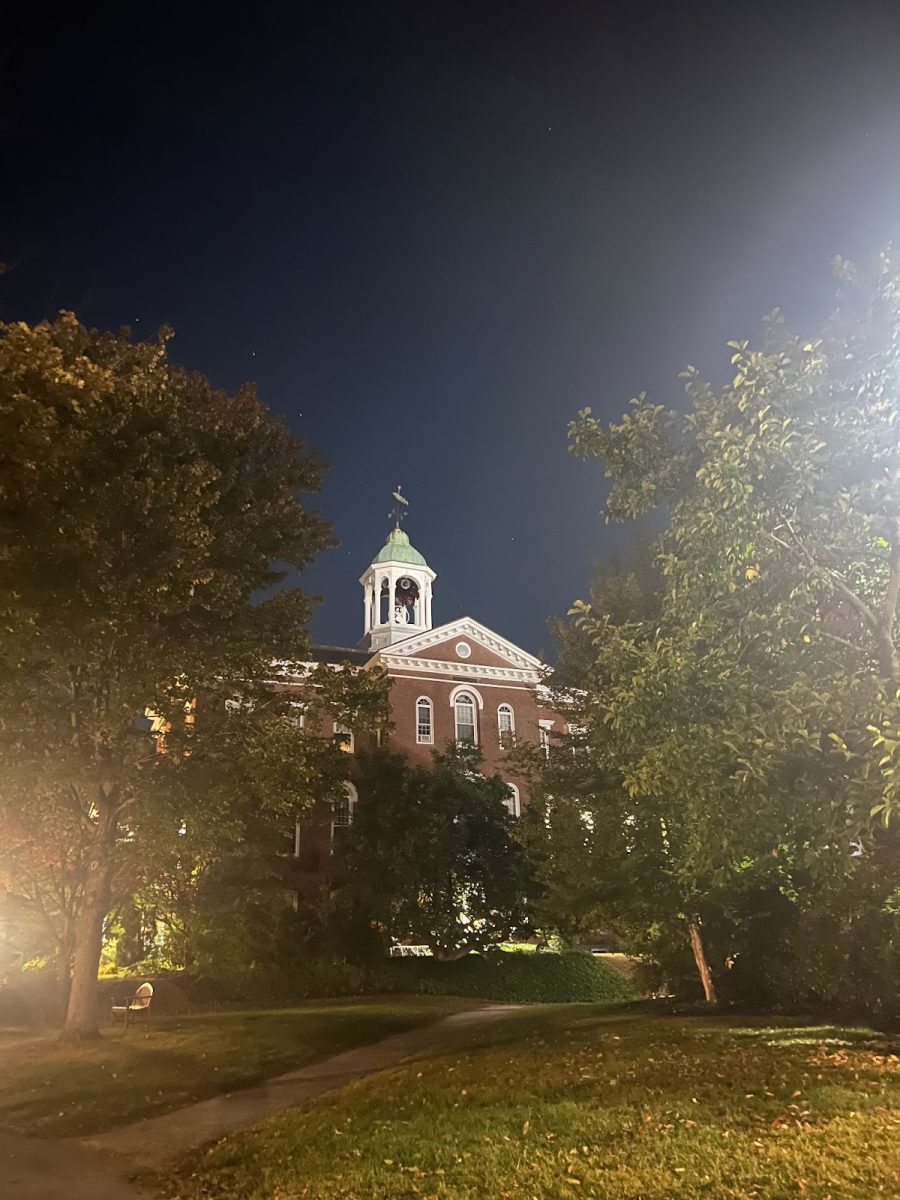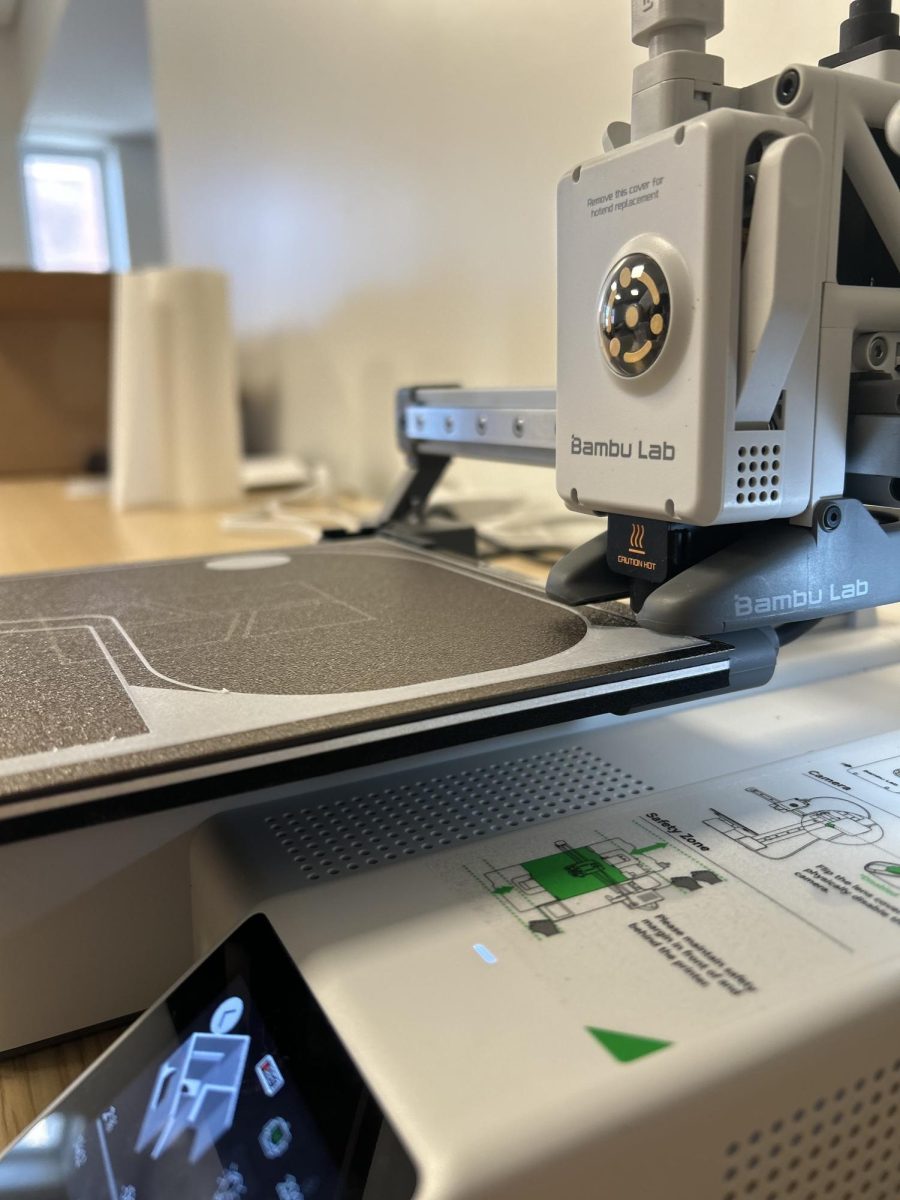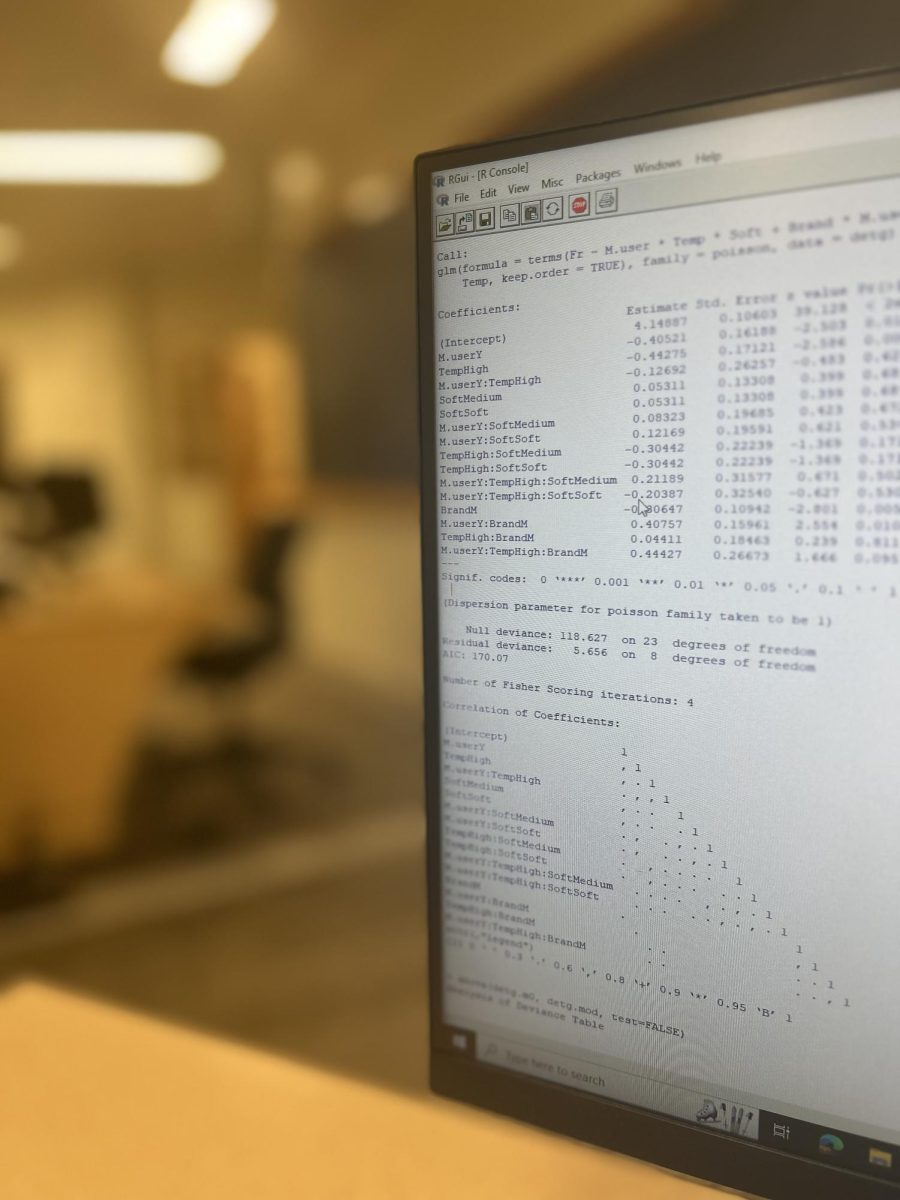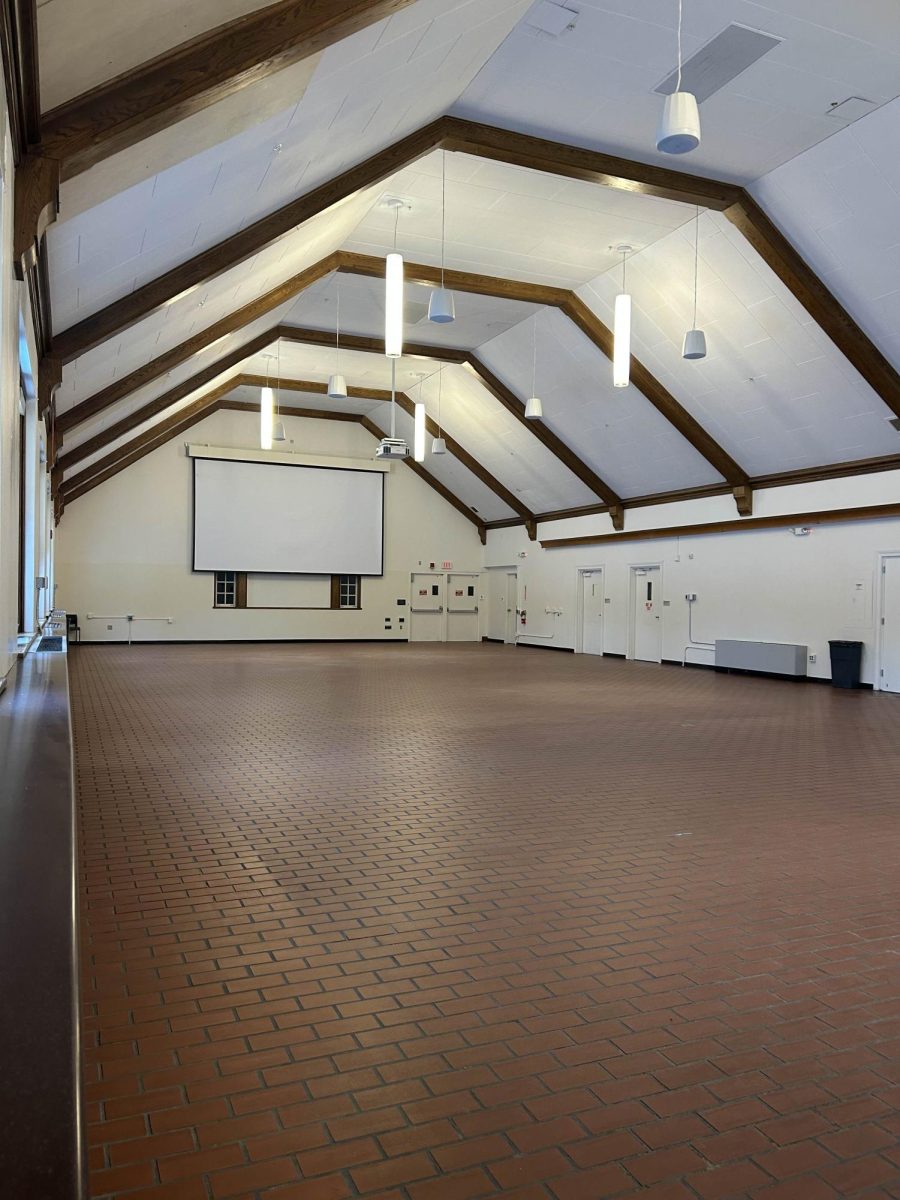As college tuitions are at an all time high, many students both at Bates and abroad are forced to ask themselves when applying to colleges what they intend on doing with a liberal arts degree or a humanities major. Many high school and college students worry that they won’t be able to make a return on their investment, or worse, that they’ll be stuck to work an unfulfilling career. While these issues seem more prevalent than ever, the worries are not new. On Friday, March 14, Carolyn Ryan ‘86, a former English major and current Assistant Editor at The New York Times came to share her experience with purposeful work and quell some of the worries familiar to liberal arts students especially those in humanities. Mediating the discussion was The Bates Student Editor-in-Chief, Sarah Rothmann ‘19, and Bates Magazine Editorial Director and Editor, Jay Burns.
Like many first years, Ryan came in to Bates certain about pursuing one path only to change her mind and pursue others in later years. “I do remember that initially, I came to campus and my extremely elaborate and very solid career plan was that I was going to win Wimbledon,” Ryan paused as the audience laughed, “and then I would appear on tour and maybe do Bates from a distance. And then I was going to be a cartoonist, and then I was going to be a lawyer…What happened to me, and I’m sure your college experience is similar, my first year I did tennis and it was pretty intense, didn’t win Wimbledon, but I think we beat Colby. But, the second year I stumbled into The Bates Student office, and what I really noticed—the tennis kids were great, but they were like, you know, a certain kind of kid—the kids at The Bates Student office were curious about the world, interested about talking about issues, compassionate, interested in talking about politics… and I admired them so much and I just thought ‘these are my people.’’
Ryan, who would eventually be nicknamed “Scoop” by her peers, began writing articles like “The Joy of Being a Dana Scholar” and “Steel Band on the Quad,” which eventually lead her to write more substantial pieces later in her Bates Student career, such as restaurant reviews and “The perils of roommates.” (For the record, according to Ryan, the best roommates should have a great stereo and love the Violent Femmes).
Through it all, Ryan was fueled by her love of writing which came to her at an early age: “…I mean I was very nervous about writing, but I had always, as a kid, liked to write. And when I was a little kid, really little, like fifth grade— I wrote a book. I grew up outside of Boston, and it was—it’s going to sound more sophisticated than it was—it was about the desegregation battles in Boston and the black and white racial class. And I had always liked the idea of being a writer.” In college, one of the biggest draws for Ryan to write for the newspaper was her excitement for “the possibility of describing things.”
Now, as one of the names on the masthead for The New York Times, Ryan works to hire new talent. “Just as a general rule, what I try to do is hire people for hunger and potential more than credentials, obviously we want people with experience, but what I’ve noticed at The New York Times, what distinguishes those journalists from the rest of their field…is something that you can’t really teach, which is drive.” One example of this drive would be the slew of message she would receive when she reemerged from going to the movies at night: “I would come out the movie and my phone would just be pulsating with all the messages from the reporters who were like working through the night, sending me a new draft, just got a new source, wanted me to know this, had another idea, and there’s like a drive that really defines almost an obsessiveness about what they want to do. And you can sort of sense that whether people are at a small paper or digital outlet. Where I’m seeing the good journalism training nowadays is at the non-profits.” A few of the non-profits that Ryan highlighted were New York’s The City, San Francisco’s Reveal, and Austin’s Texas Tribune.
One of the questions Burns asked during the talk was about what Ryan penned as “The Worry Trifecta” in an essay to the Bates Magazine—the three pillars being “Finding work”, “paying student loans”, and “wondering whether your English degree has any value whatsoever”. Burns then read a particularly poignant excerpt from her essay: “‘I found myself deeply troubled by how to shape a future for myself that will expand the limits of my learning. I fear that I will shrink from the task of self-enrichment. How does one remain a student, a seeker of knowledge, ideas, and meaning, in a modern, complex, bureaucratized world: how do we prevent our lives from being frittered away by detail as Thoreau wrote?’”
Burns then asked Ryan what she would tell her 21 year-old self knowing what she knew now. Without skipping a beat, Ryan responded “What a pompous kid!” She continued, stating, “Well, I think the thing that journalism is about is embracing your native curiosity and it’s an essential ingredient, and I think, for one thing, I did worry about—I don’t know why I worried about this as a kid—but I had seen, maybe in movies or in real life…people who have become bitter as they aged, or cynical, um, and I never wanted to be like that and it frightened me a little. And I used to read a lot of biographies, I still do… but I would read biographies both to understand how people became successful but also to understand how they dealt with disappointment. And what I didn’t want to do was to become negative, cynical, bitter, and for some reason I think that shaped what I was looking for and looking not for, and I think, to me, the essential ingredient really comes to curiosity.”
During the question and answer period, the majority of the questions the audience asked had to do with the recent shift in journalism from traditional print media to a more digital platform. For Ryan, one of the biggest changes has been the “biorhythm” of the newsroom:“It used to be, and not that long ago, maybe ten or maybe fifteen, that our biorhythms as a newsroom were really based on a daily paper. So, that meant people came in, kind of late in the morning, maybe 10:30, and maybe got an assignment, and then people took time for lunch, and you would kind of regroup at like 3:00 or 4:00, and you might follow your story by 6:00 or 7:00, and it gets edited at 8:00 or 9:00, and that was kind of the rhythm of a newsroom. And that has really changed. As soon as you really get news, and confirm news, that goes up. You publish it on the web and I think it has forced a kind of transparency around what we do.”
“What we want to be, and one of your fellow Batesies said this today,” said Ryan, “we want to be the one you turn to when you really want to get something solid, you really want to know what’s right and what’s wrong in terms of a big news story. So that’s our reputation, so even in a digital universe, we have to preserve that, and so part of that is being as forthright with readers about our reporting, about what we know, and we have to be really careful—even in a fast-paced environment. So we are not driven to get things first, we certainly want to, but what we really want to be is right.”
Categories:
Ryan, ‘86, Gives Scoop on Life After Bates
106 Views
March 20, 2019
0
Donate to The Bates Student
$1500
$1500
Contributed
Our Goal
Your donation will support the student journalists of Bates College and help us cover our annual website hosting costs.
More to Discover


